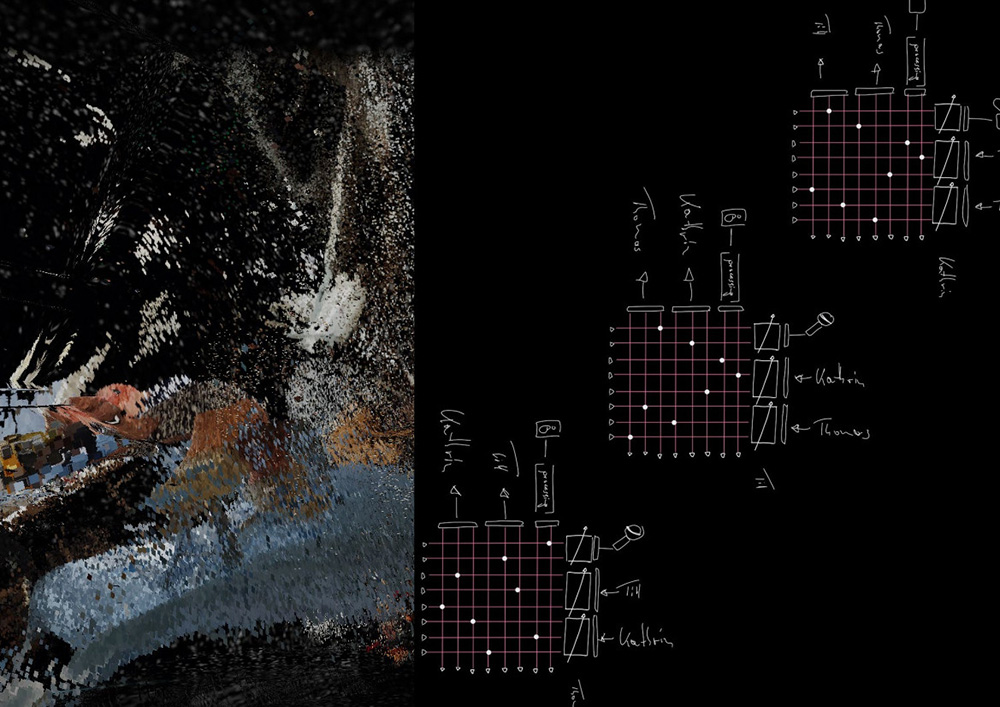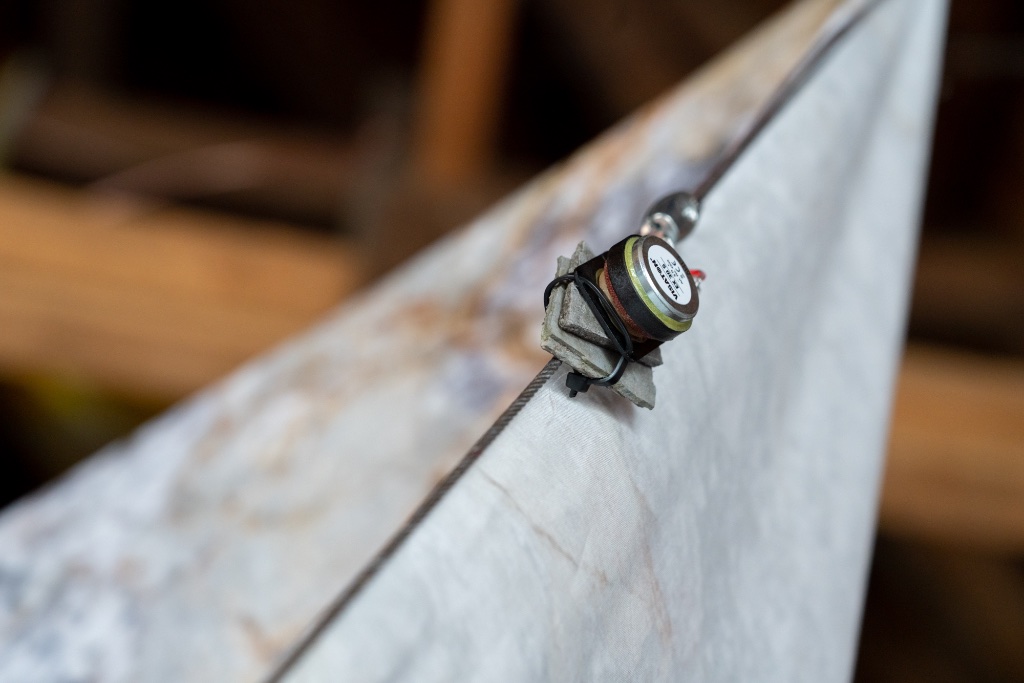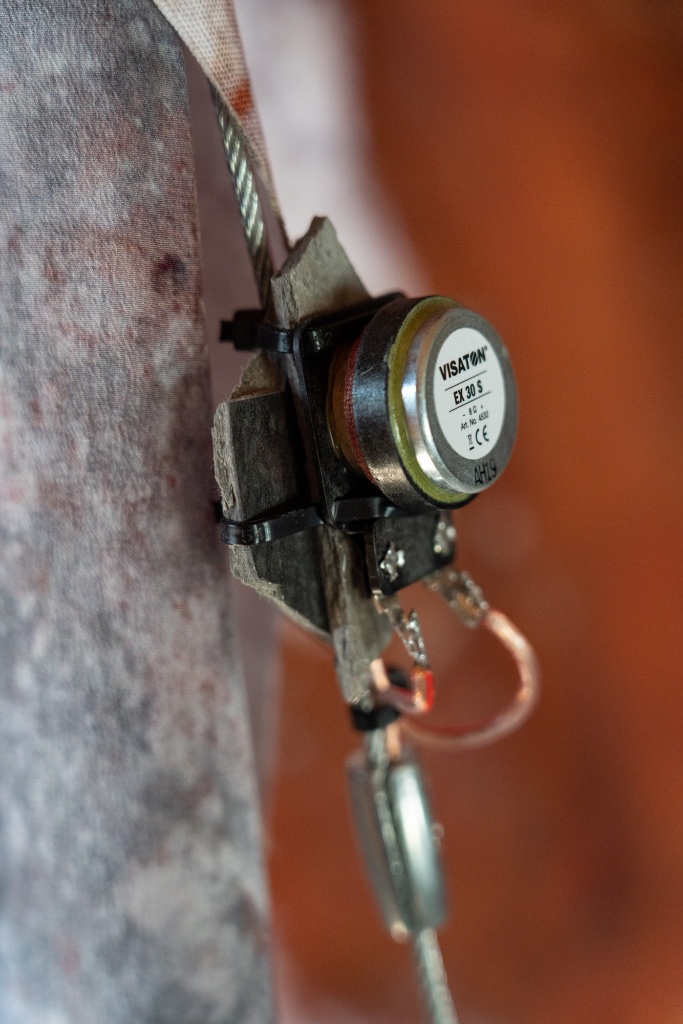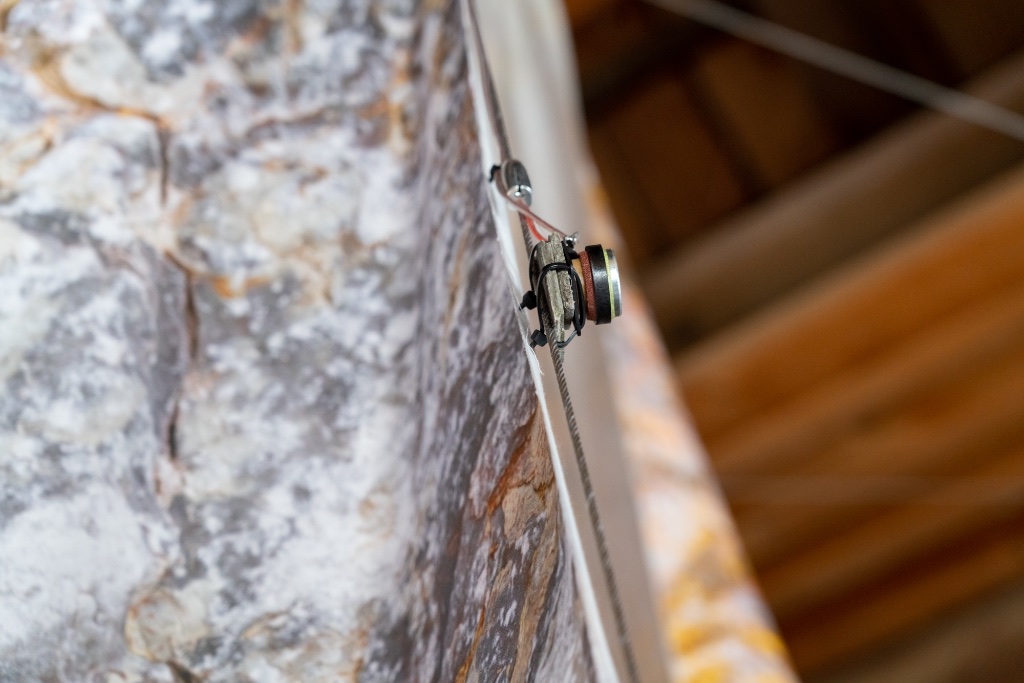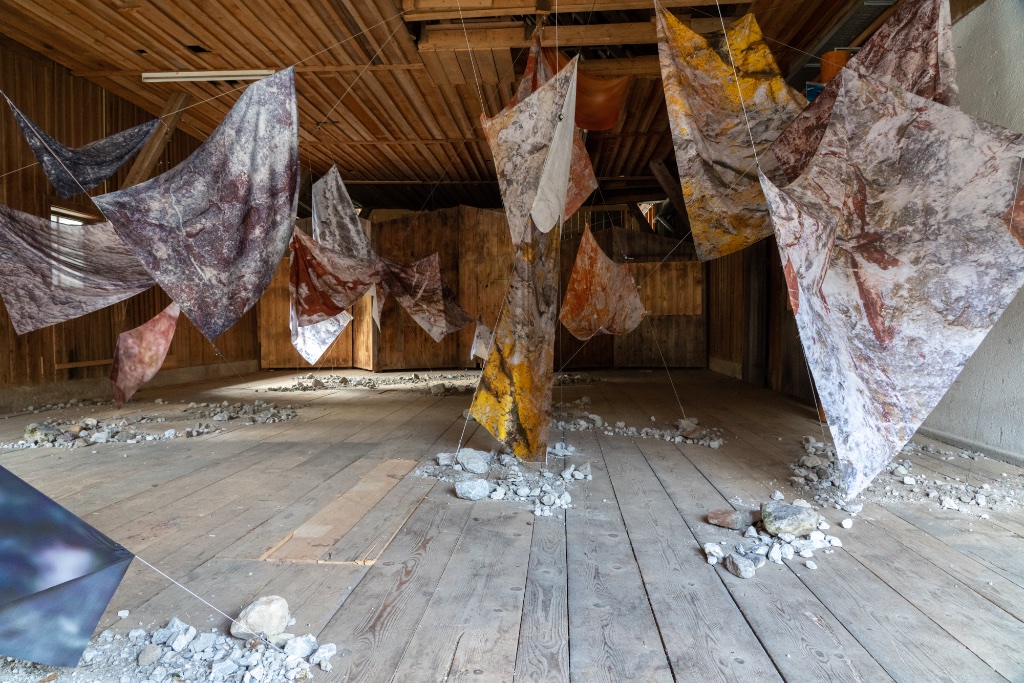
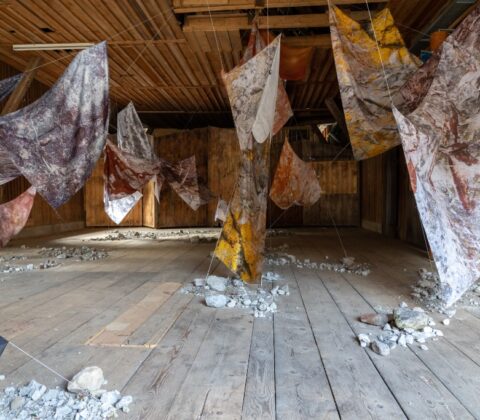
Rieseln @ National Park Gesäuse
Exhibition Alte Säge Gstatterboden 2021
Nicole Krenn, Lisa Truttmann, Thomas Grill
Manchmal, auf dem Weg, trifft es aus der Nähe auf das Ohr, unvermittelt, und mit der Kopfbewegung auf das Auge. Eine helle, leichte Bewegung der kleinsten Bestandteile. An Kanten und Flächen, über Formen und Texturen sammeln sich diese Winzigkeiten zu einer beständigen Strömung.
Sometimes, along the way, the ear is hit up close, suddenly, and then also the eye with a movement of the head. A bright, slight movement of the smallest components. On edges and surfaces, over shapes and textures, these tiny things gather to form a constant flow.
This year’s exhibition in the Alte Säge in Gstatterboden is designed by Thomas Grill, Nicole Krenn and Lisa Truttmann. Under the exhibition title “Rieseln” they deal with the forms of erosion that are omnipresent in the national park in a variety of ways. The artists have examined the temporal process of erosion as well as the visual and acoustic phenomena and elaborated them through the media. The architecture of the Alte Säge in Gstatterboden is directly integrated as the environment for these topics. An installation spans a permeable, walk-in room, flowing from ceiling to floor, in which photography and sound are used on various materials – from fine silk to coarse linen, arranged on steel threads. In terms of content and form, these materials connect the exhibition space itself and the thematic landscape of the national park. Detailed recordings in sound and image serve as a reference and source material. These fragments form contrasts between geometric and soft, rigid and flowing, in sound between naturalistic and synthetic – the installation becomes a tangible, lively landscape.
The auditory component consists of 3 vertically stacked layers: From the semi-open attic of the hall, a synthetically generated wind flow can be perceived, swelling and calming with the intensity of the sun’s irradition. Below the wooden floor, a subtle water trickle reminds of the presence of small streams all over the national park. In between those two layers, the space is traversed by an airy arrangement of steel wires, supporting the large textile surfaces and also bearing a total of 12 sound emitters. These are acoustic transducers mounted on small pieces of slate, producing ever changing patterns of tiny clicks, flowing from far overhead to below the floor. Occuring only once in a while, on a very subtle loudness level, the trickling movements provide moments of irritation within the exhibitions’s overall flow of textures and sounds.
Opening times:
May 01–15: Fri–Sun, 10–18h
May 19 through October 31: Tue–Sun (Mon closed), 10-18h
Free admission
Alte Säge Gstatterboden
gegenüber Nationalpark Pavillon
Gstatterboden 25
8913 Gstatterboden
+43 664 8252313
Presentation of the Digital Patina at lecture series Best Available Copy
6. May 2021:
In the context of the lecture series BEST AVAILABLE COPY – the preservation of time-based media art reflecting its technology at the Academy of Fine Arts at the Institute Conservation – Restoration Almut Schilling discussed the concept of the digital patina.
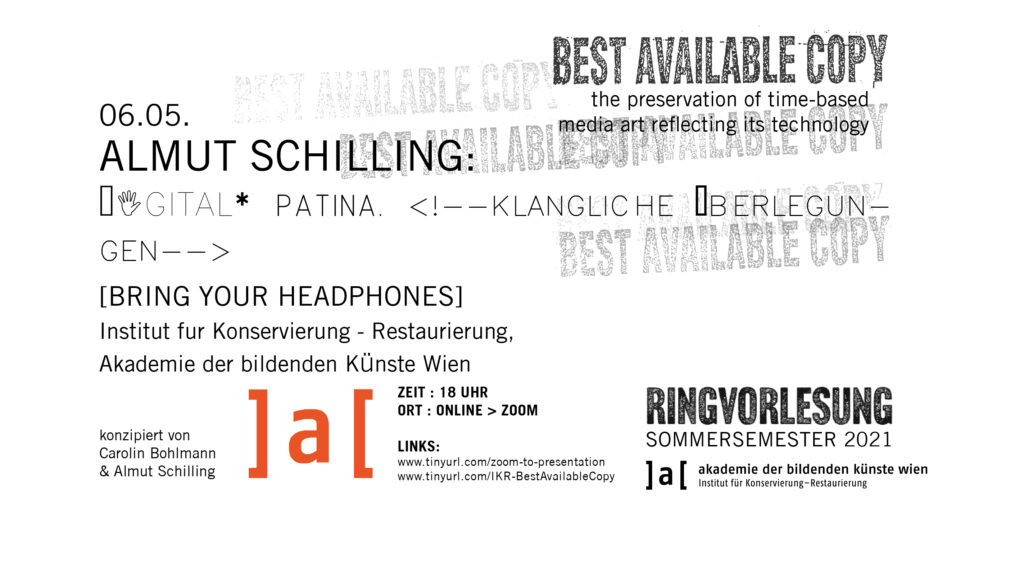
Digital Patina [a CARE-ful excavation]
Presentation for the 2021 SAR artistic research conference
Voicings of an auralist – a series of transmissions from an unknown source
A unique artifact was found in the Auer-Welsbach-Park in Vienna that was soon discovered to be a manifestation of information left behind by who could be called an “extra-human ethnologist”.
This feature portraits the excavation and restoration processes as well as what has been extracted as the content of the discovered message, telling the story of how a sonically focused being may perceive and comment on our visually dominated world.
Till Bovermann: concept, auralist text, auralist source material
Almut Schilling: concept, forensics text, material excavation
Thomas Grill: concept, analysis
Tobias Leibetseder: concept, production, mixing
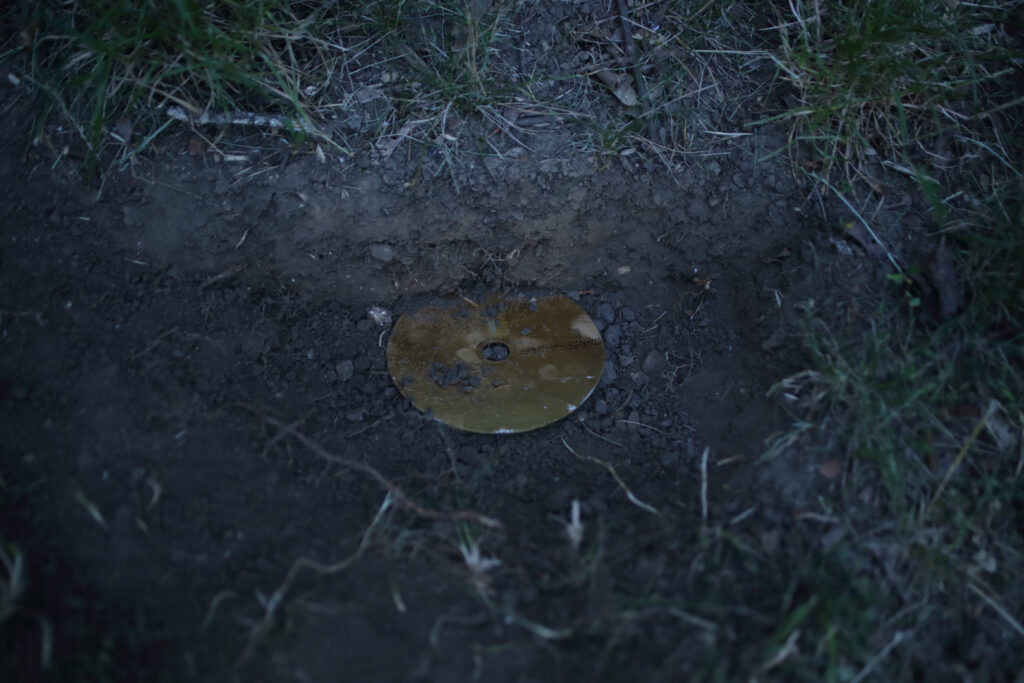
Presentations:
March 16, 16:15 CET (online) as a chapter of the new book
Knowing in Performing. Artistic Research in Music and the Performing Arts
Presentation event: https://www.mdw.ac.at/veranstaltung/?v=2616934
Registration: knowinginperforming@mdw.ac.at
Book chapter: https://doi.org/10.14361/9783839452875-008
March 21 23:00 CET, as a radio feature in ORF Ö1 Kunstradio:
Live and 7 days streaming service: https://oe1.orf.at/programm/20210321/631453/Die-Vergaenglichkeit-von-digitalem-Klang
Kunstradio (with MP3 download): http://kunstradio.at/2021A/21_03_21en.html
Please tune in, using your radio or via stream
faust 1bit audio library at IFC2020
As announced earlier, we (Till Bovermann and Dario Sanfilippo) presented bitDSP, a library for the “faust” DSP programming language to integrate bit-based synthesis, at the International Faust Conference 2020.
Here you can find the corresponding paper as pdf. There’s also a video of the presentation. If you’re curious to use it yourself, feel free to give it a try!
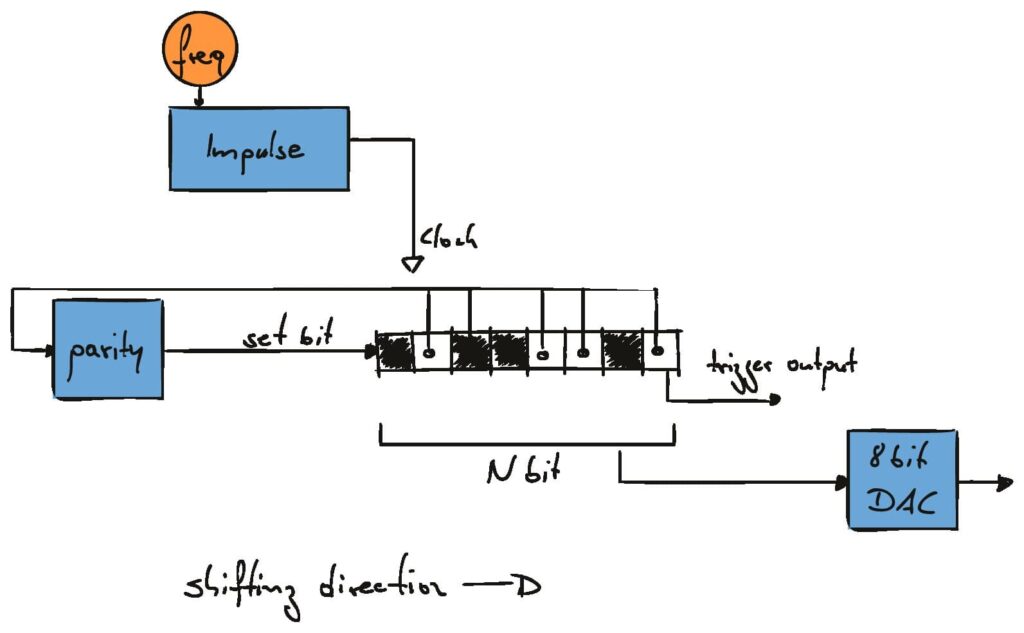
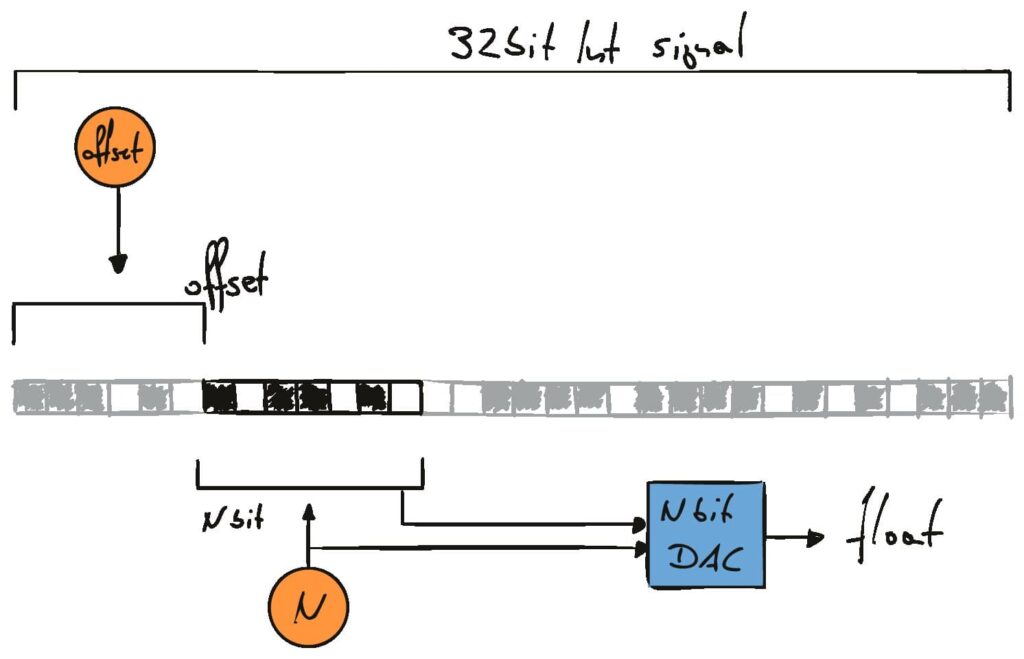


Re_Mole_10, October 26, Reaktor
(S)Low Frequency Orchestra together with Wolfgang Mitterer and Jérôme Noetinger
REAKTOR, Geblergasse 40, 1170 Wien, Austria
26.10.2020, 19:30
Zehn Jahre zu spät feiern wir die Veröffentlichung unseres Albums “Mole” und unterziehen es dabei einer Neubetrachtung.
“Mole” ist aus einer improvisatorischen “Kollision” hervorgegangen, einem ungeprobten und dennoch bühnenöffentlichen Aufeinandertreffen des Low Frequency Orchestra mit Wolfgang Mitterer. Über die Jahre seither blieben manche Eindrücke und Klänge in Erinnerung, vieles wurde vergessen, weiterentwickelt, abgerieben. Im REAKTOR nehmen wir den Faden wieder auf. Wieder wird die Aufführung als Kollision angelegt sein, mit einem weiteren Akteur, dem Tape-Künstler Jérôme Noetinger.
Das Neue ist auch immer ein Produkt des Alten.
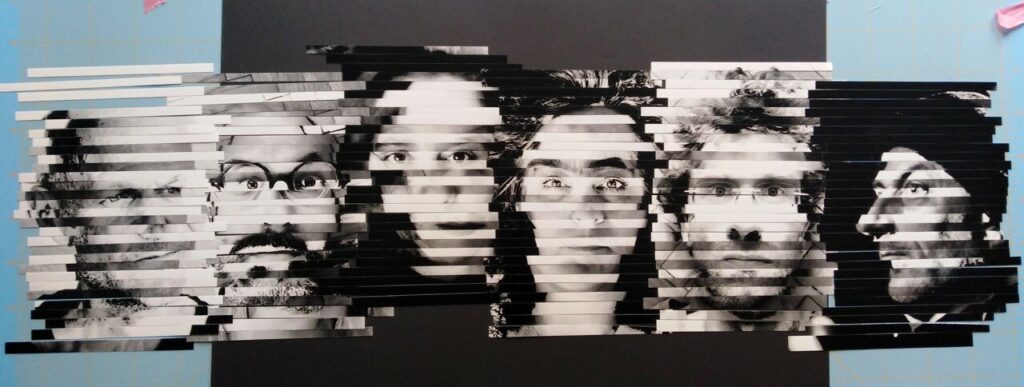
A cooperation between SKE, REAKTOR and Rotting sounds.
Low Frequency Orchestra
Angélica Castelló — Paetzold, tapes, radios
Maja Osojnik — Voice, Paetzold, electronics
Matija Schellander — Kontrabass
Thomas Grill — Electronics
+
Wolfgang Mitterer — Electronics
Jérôme Noetinger — Revox, tapes, electronics
Panel discussion, musikprotokoll 2020 festival
Thomas Grill was invited to take part in a panel discussion together with Reni Hofmüller, Christina Kubisch and Fränk Zimmer, presented by Susanna Niedermayr (ORF Ö1 Zeit-Ton) and hosted by esc medien kunst labor. The festival theme “Hidden sounds” was illuminated from different directions, in our case in the context of the rotting sounds project and the acousmatic composition noise shaping Thomas has presented at the festival the day before.
“Noise Shaping” at Musikprotokoll festival, October 8, Graz
Aloïs Yang & Andreas Trobollowitsch / Rojin Sharafi / Thomas Grill @ Hidden Dome
Thomas Grill gibt mit Noise Shaping einen Einblick in das Forschungsprojekt rotting sounds, das sich mit der Vergänglichkeit von digitalem Klang im sozialen, technologischen und zeitlichen Kontext beschäftigt. Ein zentraler Forschungsgegenstand ist die Repräsentation von Klang als 1-bit-Datenstrom, der die Brücke zwischen digitalen und analogen Signalen schlägt. Der Begriff Noise Shaping steht dabei für den voluminösen Rauschhintergrund, der als Träger der darin verborgenen Klänge verwendet wird. Aloïs Yang and Andreas Trobollowitsch spannen mechanisch erzeugte Klänge in ein komplexes digitales Feedback-System ein; found objects kommen ebenso zum Einsatz wie natürliche Substanzen und performative Raumvermessungen. Und Rojin Sharafi, die ursprünglich aus dem Iran kommt und seit einigen Jahren in Österreich lebt, widmet sich in ihrem Stück der „kulturellen Hegemonie, kulturellen Hybridität und dem kulturellen Überleben“, jenen Stimmen also, die im Kampf um die kulturelle Vorherrschaft gezielt unterdrückt werden. Für ein immersives Klangerlebnis bei Hidden Dome sorgt die 50-Kanal Ambisonics Audioanlage des Dom im Berg, für die die drei Auftragswerke konzipiert wurden.
October 8, 19:30pm
Dom im Berg, Schloßbergplatz, A-8010 Graz
paper at IFC 2020
We will present our work on 1-bit audio at the International Faust Conference 2020 taking place on 1.12.2020 and 2.12.2020 at the Maison des Sciences de l’Homme Paris Nord. Our presentation will be about the bitDSP faust library developed by Till Bovermann and Dario Sanfilippo.
Performance at Sound Campus, Ars Electronica Festival Linz, September 11
Thomas Grill, Till Bovermann and Kathrin Hunze will perform “merge and dissolve”, an audiovisual performance concept in the SOUND CAMPUS program, part of the Ars Electronica Festival 2020.
This performance involves three interactants, two predominantly working in the audio domain (Thomas Grill and Till Bovermann) and one focusing on a visual counterpart (Kathrin Hunze). We generate and exchange streams of 1-bit audio, a signal representation with properties of both the digital and analog domain that we have already been investigating in the artistic research project “Rotting sounds – Embracing the temporal deterioration of digital audio” (FWF PEEK AR445-G24). With simple switchboard matrix devices, we channel such bit streams between the individual performers and through simple processing modules, like delays, logical operators, etc., generating feedback and interferences on the way. These phenomena are made audible and are also mirrored by a visual representation of particle streams, forming directed jets and point cloud aggregations.
11. September 2020 – 20:10 – 20:35
Hauptplatz 6, Glashörsaal D (H6.DG.04)
4020 Linz, Austria
